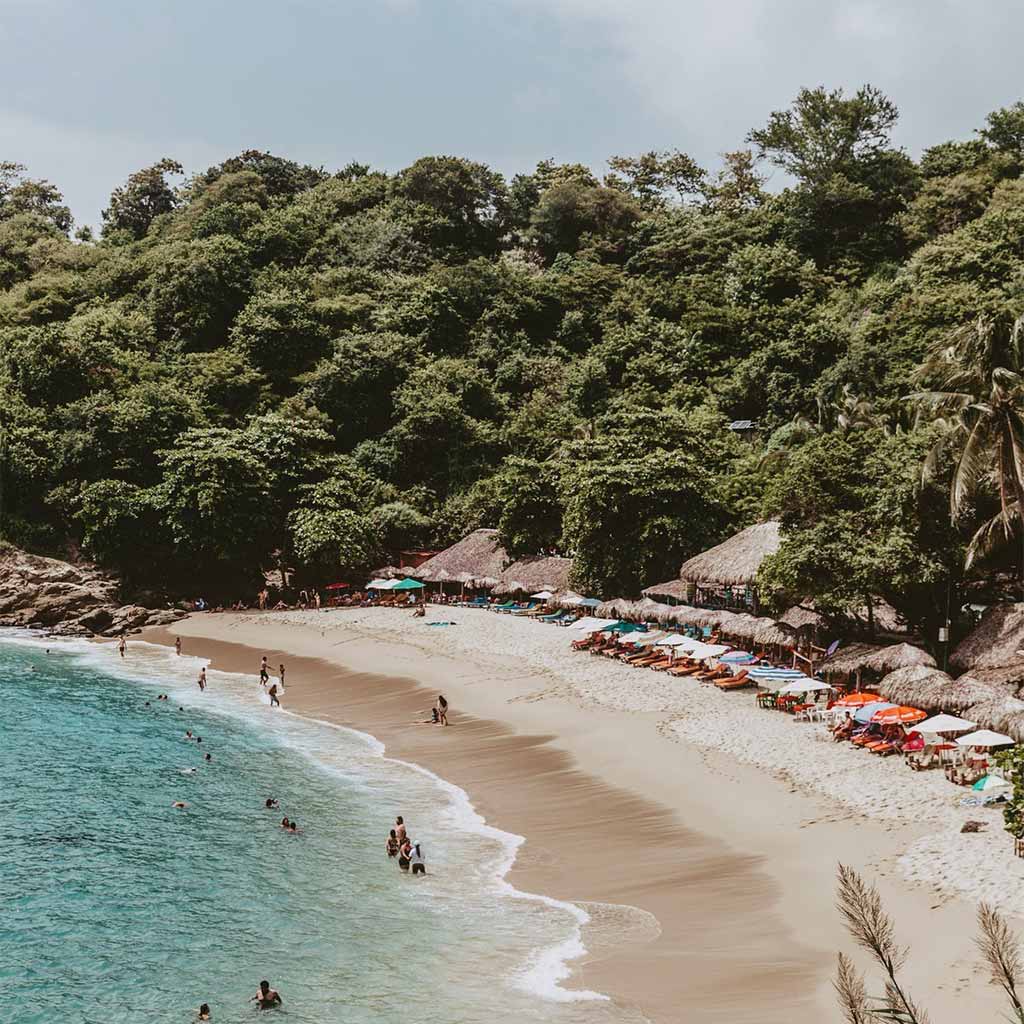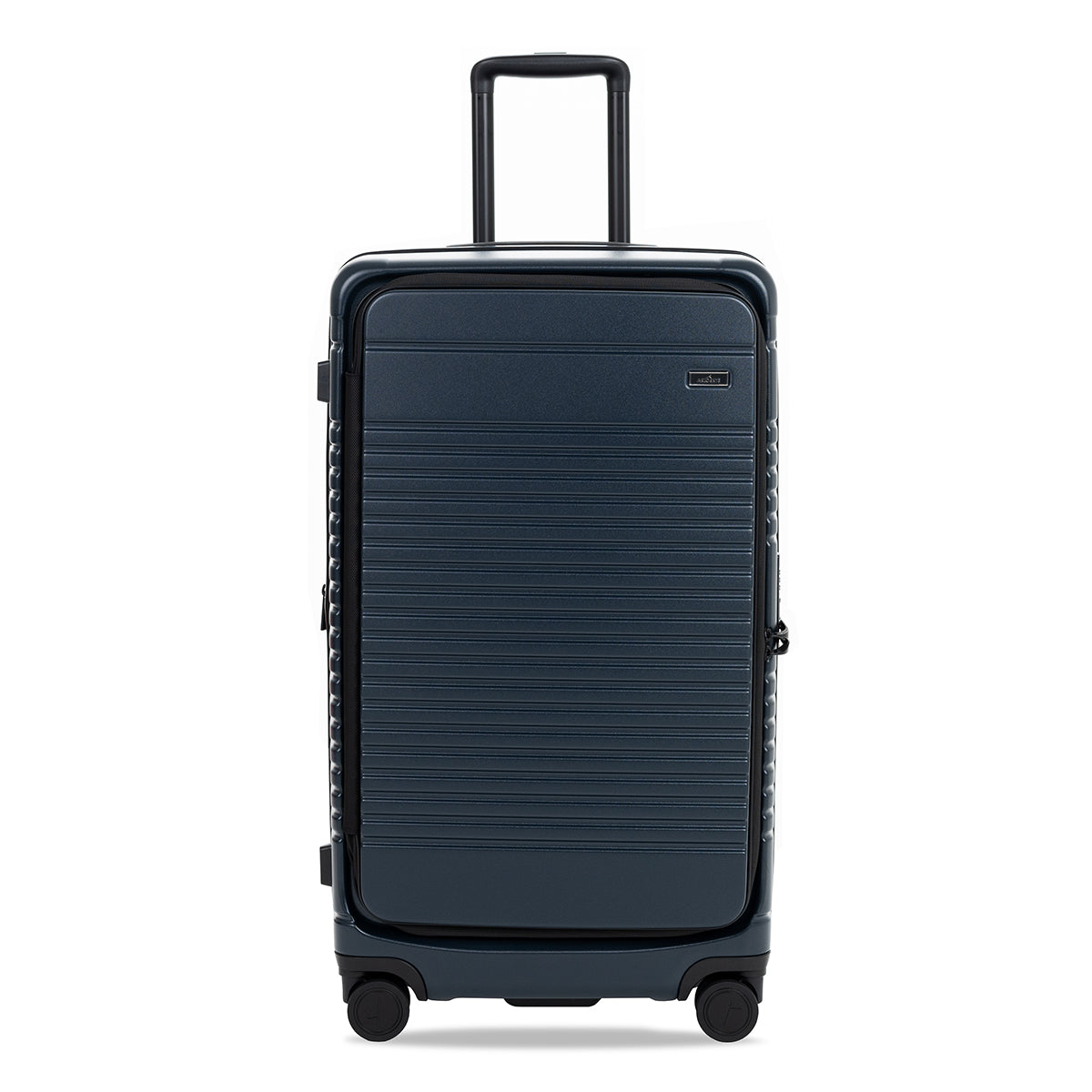 Left: Templo de Santo Domingo, Oaxaca city. Right: City street in Oaxaca. Photos: Charlie Clift.
Left: Templo de Santo Domingo, Oaxaca city. Right: City street in Oaxaca. Photos: Charlie Clift.
The region of Oaxaca in Southwest Mexico is defined by a mix of landscapes and cultures, from rugged mountain ranges to easy-breezy beach villages, which makes it an ideal location to spend three days of exploring, relaxing, and most definitely embracing your culinary senses. The capital city, also called Oaxaca, features 17th-century architecture with quaint courtyards and zócalos (central plazas), while the surrounding villages offer a chance to experience authentic Mexican craftsmanship and cuisine at its most inspiring.
Where to stay
 Casa Criollo, Oaxaca city.
Casa Criollo, Oaxaca city.
For traditional luxury, the Quinta Real is a go-to choice. Set on the grounds of a 16th-century Santa Catalina convent, the location features a heated pool, beautifully appointed rooms, shaded courtyards (designed to promote contemplation), as well as original frescoes and tiles. Under the hotel are tunnels leading to the two of the main churches of Oaxaca. If you're looking for something more contemporary, the 10-room Hotel Los Amantes is the elegant brainchild of Portuguese architect Joao Boto Caeiro and local artist Guillermo Olguín, who came together to design a modern hotel without compromising the classical colonial style of the area. If you want to rent your own space, the recently opened Casa Criollo, (set on the same property of acclaimed chef Enrique Olvera’s Criollo restaurant), is a peaceful private home equipped with a sauna, an outdoor pool, a living room, and a terrace (bonus: it features breakfast and nibbles from the restaurant). Another recent opening, Hotel Sin Nombre, is a love letter to minimalism set in a restored 17th-century building, with a once-active distillery. Casa Oaxaca features a traditional temazcal steam bath, a well-stocked library, a terrace with a pool (sunny in the morning), and a roof terrace (strung with hammocks) with a top-notch view of the city's center. Plus, guests can book cooking classes and accompany executive chef Alejandro Ruiz on his daily market shopping. Hotel Azul, a 21-room boutique hotel that features suites designed by Oaxacan artists including Luis Zárate, the Fríjol Parado collective, and Francisco Toledo, is a good choice for those who crave artistic inspiration.
What to see
 Macedonio Alcalá Theater, Oaxaca city. Photo: Brett Gundlock.
Macedonio Alcalá Theater, Oaxaca city. Photo: Brett Gundlock.
Your time in Oaxaca is best split between the city proper, and day trips to the diverse surrounding areas. Start at the Museo de las Culturas de Oaxaca for a primer on Oaxacan history and culture. The highlight of this museum is the Treasure of Tomb 7, an offering that was found in a tomb at the Monte Alban archaeological site. This is the greatest treasure ever found in Mesoamerica, and contains exquisitely crafted gold jewelry, as well as precious stones, intricately carved bones and more. Next door, you’ll find the Church of Santo Domingo de Guzmán, the unofficial city center. Behind the church is the Jardín Etnobotánico de Oaxaca, a showstopper that can only be explored via guided tour. Another not-to-be-missed cultural landmark, the Macedonio Alcalá Theater, was constructed just a year before the Mexican Revolution. It features a baroque, Renaissance-inspired facade and hosts everything from operas to Latin American art house films. Lively markets like 20 de Noviembre and Benito Juarez are quintessentially Oaxacan, and mezcal lovers must make a stop at Insitu Mezcaleria, a cultural institution helmed by mezcal legend Ulises Torrentera.
 Monte Alban, Oaxaca. Photo: Matthew Essman.
Monte Alban, Oaxaca. Photo: Matthew Essman.
Beyond the city, one finds a choose-your-own-adventure-style experience that runs the gamut from chill to thrilling. Oaxaca was home to one of Mexico's most ancient civilizations, the Zapotecs, and just outside of Oaxaca City is Monte Alban, an expansive site dating to eight century BC and featuring plazas, pyramids, a ball court, and underground passages.

Left: Santa María Huatulco. Right: Coastline of Puerto Escondido. Photos: (L) Fernando Gomez (R) Sara Escudero.
For beach getaways, the southern cities of Huatulco (and its surrounding nine bays), and Puerto Escondido are ideal for charming seaside hotels and restaurants, and feature fishing, diving, and surfing (minus crazy-making tourist crowds). These spots are ideal for visiting nearby hot springs and the bioluminescent bays near the town of Manialtepec.

Market sellers in Ocotlan de Morelos. Photo: Charlie Clift.
En route to the south, Oaxaca's central valley has some of the finest local markets. These include Ocotlan de Morelos, famed for its nieve (hand-made ice cream); La Villa de Etla, which sells the best local meats and cheeses and is the favorite market of Oaxqueño chefs; and Zaachila, an unmissable market that has existed virtually unchanged since the pre-colonial era.
Where to eat

El Destilado, Oaxaca city. Photo: eldestilado.com.
Enrique Olvera, of Mexico City’s Pujol, is inarguably Mexico’s most beloved and inspiring chef, and Criollo—his Oaxacan baby—does not disappoint. Opened in 2016, Criollo features an expansive cactus garden with an open comal (a wood-fired griddle) and chickens and rabbits roaming the grounds. The dinner service is one of the city’s more opulent, but its weekend brunch service—featuring more traditional fare—is a la carte, with modest prices. For contemporary Mexican at its most inventive, visit Pitiona, helmed by an El Bulli alum. For an elevated take on the city’s classic dishes set in on an open-air rooftop terrace, Mezquite features traditional "treats" like grasshopper tacos. Mesón Jalatlaco has an intriguing double identity, with two separate restaurants: the seafood-centric Graciela, and De Brasa Dura, which serves grilled meat. Luvina is an experimental kitchen that expands the boundaries of traditional Mexican dishes, with a great courtyard for cocktails. El Destilado features a nine-course tasting menu matched with creative cocktails infused with regional herbs, and Origen, helmed by the acclaimed chef Rodolfo Castellanos, features updated traditional cuisine with seasonal ingredients. The quaint Cabuche serves festive interpretations of street food and market staples, including huaraches Menonita. For quick bites, the cash-only El Lechoncito de Oro—a street stand specializing in seared pork tacos—is a must, as is Pan-Am, which serves croissants stuffed with Oaxacan chocolate, cream cheese and blackberries, or ham. Oaxaca’s ultimate street food, tlayudas—tortillas toasted on sidewalk grills and smothered in beans, Oaxaca cheese, crispy lettuce, avocado, and salsa—is available at the evening-only Libres Tlayudas Doña Martha.
Where to shop

The Zapotec village of Teotitlan de Valle. Photo: Suzanne Barbezat.
Just one block south of Oaxaca city's main plaza, Mercado Benito Juarez features yummy food stands and a dizzying array of ingredient stalls—including mole, fresh cheese, dried chiles, and sealed bags of fried grasshoppers known as chapulines—that you’re legally allowed to bring back into the U.S., so long as your bounty is sealed, clearly marked, and packaged. Oaxaca is known for its chocolate, and at Soledad chocolatier—located on Calle Mina’s “chocolate block,” which features several storefronts where chocolate is ground fresh from the toasted cacao pod in old-fashioned mills—you can grind your own custom Mexican drinking chocolate. A six-room art marketplace, Andares del Arte Popular, has traditional crafts ranging from black ceramics and woven rebozos to pressed tin mirrors and ornaments, while the socially conscious Colectivo 1050 offers responsibly made pottery. The women-run shop Mujeres del Barro Rojo, in San Marcos Tlapazola, sources red clay pottery from various villages. Outside the city, the Zapotec village of Teotitlan de Valle has been crafting textiles for generations, and these world-renowned woven pieces—as well as special commissions—are available on Avenida Juarez.
Where to relax

Muss Cafe at Casa Antonieta, Oaxaca city. Photos (L): Casa Antonieta (R): @nud_breddostacos.
Muss Cafe at Casa Antonieta serves perfect flat whites (beans are sourced from Finca Las Nieves), mezcals, and cocktails in a decidedly bright and airy courtyard. If you’ve yet to try pulque—a traditional Mexican spirit made from fermented agave— La Biznaga is a great spot to dive into this specialty. They also serve imaginative cocktails and feature nouveau-Oaxacan fusion dishes. Stop by the casual Bar La Giralda for a memorable michelada, then hit Pollos Bar for a chance to experience cumbia music in a relaxed, laid-back environment. Finally, if you’re spiritually driven and in Oaxaca on the second Monday in October, you can visit Santa María del Tule located 6 miles west of Oaxaca city and join locals in celebrating the El Árbol del Tule, a 2,000-year-old tree believed to be the walking stick of a god who took root in the town.









